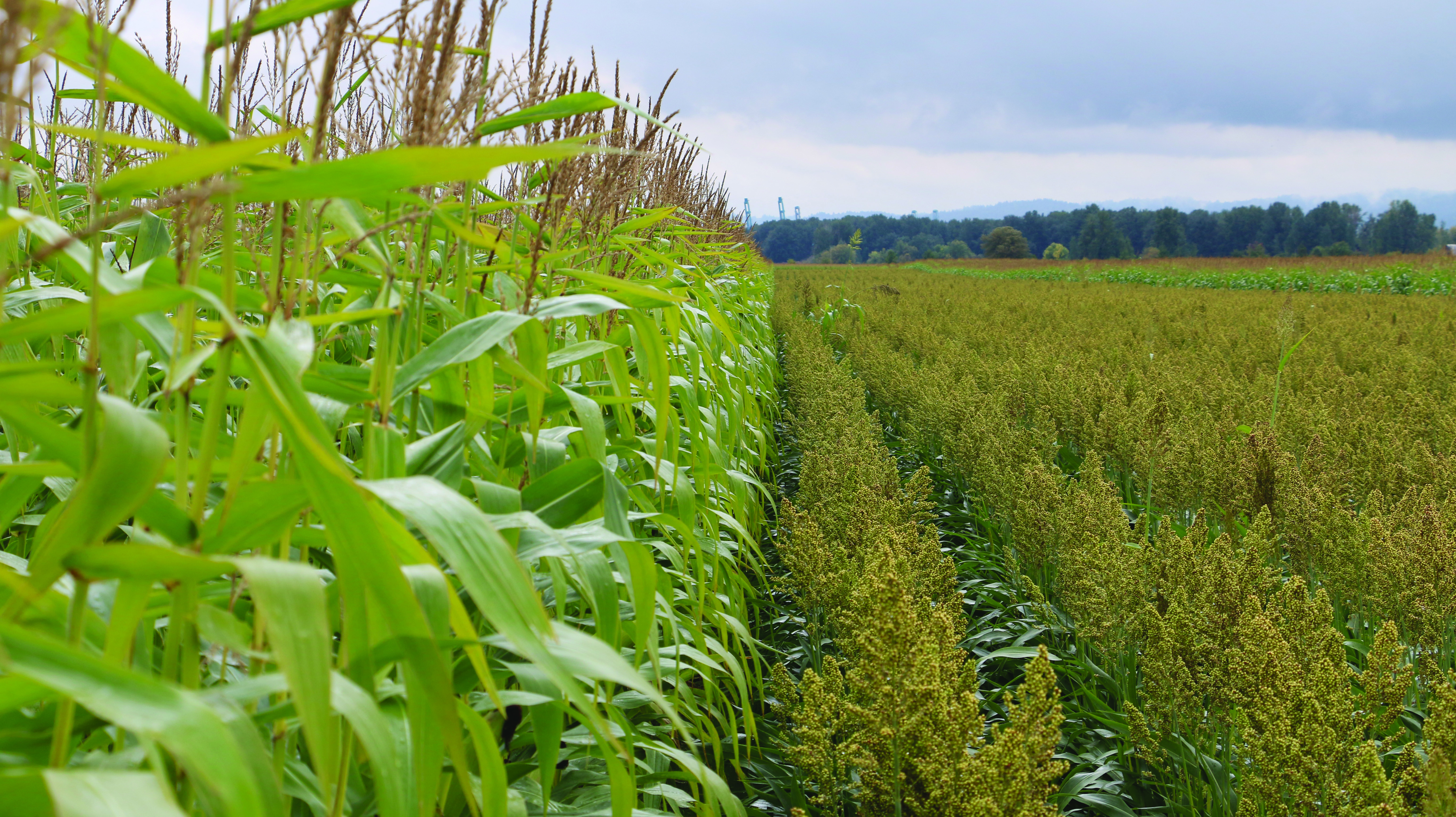Hear the Cranes Come
A farming experiment is benefiting endangered sandhill cranes and could establish new research for crane conservation in the Northwest.
It’s 7 a.m. and ecologist Rob Dillinger sits in his car alongside a cornfield near the Frenchman’s Bar Park in Vancouver, Washington. He’s waiting for something magical to occur. A rattling baritone call heralds the approach of sandhill cranes stretching above the lower Columbia River from Oregon’s Sauvie Island. They come here for the food, and to relax before they migrate north in April.
Columbia Land Trust’s experimental farmed crops in the Vancouver Lake Lowlands, also known as Cranes’ Landing, have begun attracting cranes to this location in record numbers. The largest flock (using crops) was recorded this February with approximately 1,150 individuals. We’ve also seen thousands of snow and Canada geese, as well raptors, coyotes, amphibians, pollinators, and Columbian white-tailed deer. Since 2016, when the Port of Vancouver donated the 527-acre property to Columbia Land Trust, more than 400 acres of corn, alfalfa, peas, and sorghum have been planted. Cranes have slowly adapted to these fields for landing, staging, and feeding.
Biologists and land managers on the project have made adjustments as they learn what the cranes prefer. Adaptive management on the fly has been essential to establishing baseline data about the behavior and needs of cranes in the region. “No other organization in the country is doing as intense management with food plots for cranes,” said Dr. Gary Ivey, research associate with the International Crane Foundation.
“As we lose more natural habitat, especially in Clark County and the surrounding area, cranes may end up relying on these food sources for survival. The Land Trust’s project is going to be an important strategy to maintain in the lower Columbia River for the future of sandhill cranes.”

Land Trust Natural Area Manager Dan Friesz says this project goes beyond food, though. He and Dillinger collect and study mapping information, including crop row size and spacing, plus data on soil health, when and from where cranes fly, what fields they land in first, how far into crops they walk, at what times of day they use crops versus wetlands, and finally why, when, and in which direction they depart. All these variables, plus food availability and weather, play a role in determining crane behavior, and inform the team’s future planning.
In 2018, nearly two miles of tall berms—raised ground—will be constructed so cranes will feel secure from disturbances, levees will be removed to join fields, and crops and native plants will continue to be installed with the seasons.
Observing sandhill cranes today could be very different from tomorrow and Dillinger’s work ends as the light damps out. The cranes head out to roost in wetlands across the river for the night. Tomorrow, we’ll hear the cranes come again.
Watch some recent footage of cranes on the conserved site.